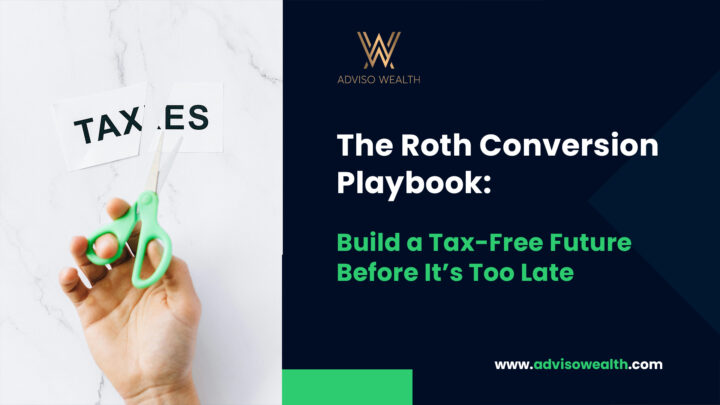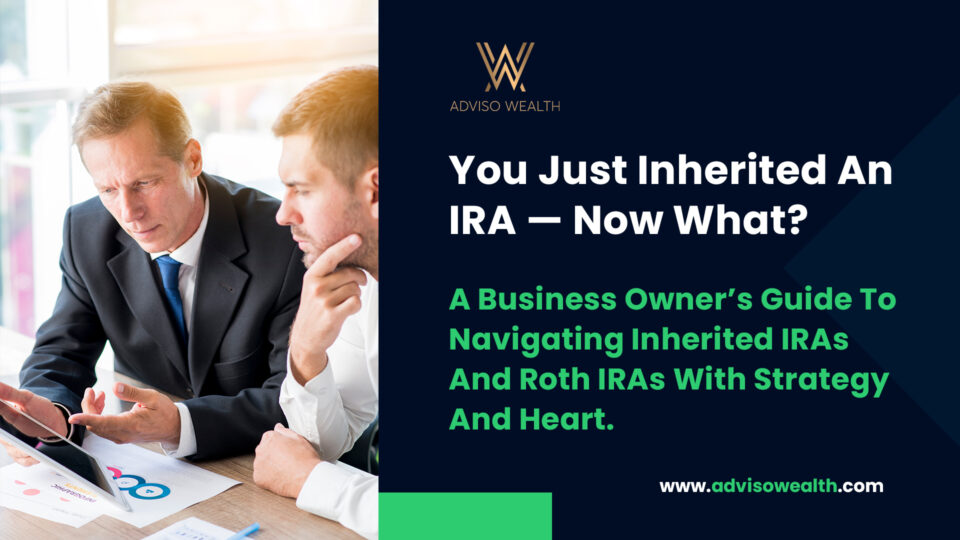You’ve spent decades building a portfolio, maxing out retirement accounts, climbing the corporate ladder, maybe even raising kids or caring for aging parents along the way. You’ve been disciplined, consistent, and forward-thinking.
But here’s the question no one asks until it’s too late:
What will your tax bill look like in retirement—when the paycheck is gone, but the IRS still wants a cut?
If you’re not thinking about Roth conversions now, you’re missing one of the most powerful tools in the retirement planning arsenal. And timing? It’s everything.
What Is a Roth Conversion?
Let’s get the basics out of the way:
A Roth conversion means taking money from a pre-tax retirement account—like a Traditional IRA or 401(k)—and moving it into a Roth IRA, where future growth and withdrawals are tax-free.
But here’s the catch: when you convert, you pay taxes on the amount you move. It’s like paying the toll early, in exchange for a lifetime of tax-free driving.
Why would anyone voluntarily pay taxes now?
Let’s dive into that.
The Roth Advantage: Why Converting May Be the Best Move You Make
1. Tax Rates Are on Sale (For Now)
Today’s tax rates are historically low. But the 2017 Tax Cuts and Jobs Act is set to sunset at the end of 2025. That means your current “12% bracket” might become the “15% bracket.” Your “24%” might soon be “28%.”A Roth conversion in 2024 or 2025 might be your last chance to lock in low tax rates for life.
2. You Control the Timing
Required Minimum Distributions (RMDs) from pre-tax accounts begin at age 73 (and may increase your income whether you need it or not). Roth IRAs have no RMDs during your lifetime. That gives you more control over:
- When you take income
- What tax bracket you’re in
- How much Medicare IRMAA surcharges you’ll pay
- What tax bracket your heirs will be in
3. Roth IRAs Are a Powerful Legacy Tool
When your children inherit a Traditional IRA, they must drain it within 10 years—and pay taxes as they do. If your child is in their 40s, working in a high-paying job, they may owe taxes at the top marginal rates.
But if they inherit a Roth IRA? That 10-year clock still ticks—but the withdrawals are tax-free.Want to give your kids more than money? Give them flexibility and freedom.
A Visual Case Study: Meet Alan and Priya
Alan (62) and Priya (60) have $2.5M in pre-tax retirement accounts and modest taxable income in early retirement. They plan to delay Social Security until 70.
They have a window—roughly 8 years—to fill up their 24% tax bracket by converting $100K–$150K per year to Roth. That means:
- Lower lifetime taxes
- Smaller RMDs at 73
- Fewer IRMAA surcharges
- A tax-free pool of money to draw from later
We ran the numbers. If they convert $1M to Roth across 8 years, they save over $300,000 in total taxes—even after paying taxes today.
Roth Conversions Are Not for Everyone
Let’s be honest. This strategy is nuanced. It isn’t for everyone, and timing is critical.
Roth Conversions Might Make Sense If: (We will make it H3 tag)
- You’re in a lower tax bracket now than you expect in the future
- You’re retired or semi-retired but not yet collecting Social Security
- You’re delaying RMDs and want to reduce future taxable income
- You want to leave tax-free money to heirs
- You want to avoid the IRMAA cliff for Medicare premiums
May Not Be a Fit If: (We will make it H3 tag)
- You don’t have cash outside of retirement accounts to pay the taxes
- You’re currently in a very high tax bracket and expect it to drop in retirement
- You rely heavily on your RMDs to fund retirement and need liquidity
- You need access to the funds in less than 5 years (Roth conversions have a 5-year rule)
The Tax Planning Window: Before RMDs, Before Social Security
The best time for Roth conversions is often in your 60s, right after you retire but before your income increases again from Social Security or RMDs.
This window—between age 60 and 72—is where the tax savings magic happens.
We call it the Tax Planning Gap.
Use it, or lose it.
Let’s Talk About IRMAA: The Hidden Roth Penalty
IRMAA (Income-Related Monthly Adjustment Amount) is the surcharge you pay on Medicare premiums if your income crosses certain thresholds.
When you do a Roth conversion, your modified adjusted gross income (MAGI) increases—and so can your Medicare premiums two years later.But this isn’t necessarily a dealbreaker. Sometimes paying IRMAA for 1-2 years is a small price to pay for decades of tax-free growth. But it needs to be modeled.
But What About Taxes Today?
A common objection: “Why should I pay taxes now? Can’t I just let my Traditional IRA grow and deal with it later?”
Let’s reframe that:
- Paying taxes now at 22% or 24% could save you from paying 32% or 37% later
- Without a plan, your RMDs may push you into higher brackets, trigger IRMAA, and even cause more of your Social Security to be taxed
- With conversions, you shift growth into a tax-free container
You’re not just paying tax—you’re buying future tax freedom.
The 5-Year Rule: What You Need to Know
There’s a quirky rule you need to know: each Roth conversion has a 5-year clock before you can withdraw the converted funds penalty-free.
This isn’t usually an issue for those converting for long-term tax planning, but it’s worth noting if you’re younger than 59½ or may need the money soon.
Charitable Gifting and Roth Conversions: Can You Do Both?
Yes—and in fact, they go beautifully together.
Let’s say you plan to give to charity over time. Instead of writing a check every year, you could contribute appreciated stock to a Donor Advised Fund (DAF) and offset the income from a Roth conversion.
For example:
- Convert $100K from your IRA
- Contribute $30K of appreciated stock to your DAF
- Use the charitable deduction to reduce your taxable income
This doesn’t eliminate the tax entirely—but it’s a smart way to align your values with your tax strategy.
Should You Convert Everything at Once?
Rarely.
The best approach is usually partial conversions over a number of years. Think of it as filling up your tax brackets without spilling into the next one.
Example:
- Fill the 22% bracket in 2024
- Then the 24% bracket in 2025
- And pause in 2026 if your income rises due to Social Security or RMDs
This “bracket management” is where real tax planning happens.
The Roth Decision Is Strategic, Not Emotional
It’s easy to think of taxes as the enemy. But Roth conversions aren’t about tax avoidance.
They’re about tax alignment. Matching your income to your goals. Spreading the burden strategically. Giving your future self, or your heirs, a more flexible portfolio.
Too often, people wait until they’re 72, see a giant RMD and a Medicare IRMAA letter, and say, “I wish someone had told me sooner.”
Your Retirement Deserves More Than Guesswork
If you’re wondering:
- “Should I do a Roth conversion this year?”
- “How much should I convert?”
- “How do I avoid a huge tax bill—or worse, Medicare penalties?”
You’re not alone. This is what financial planning is for—to model out the tradeoffs, look at the big picture, and align your tax strategy with your life goals.
Let’s Map Your Roth Conversion Strategy
A Roth conversion isn’t just a tax move. It’s a declaration:
“I want control. I want tax-free growth. I want to design my retirement—on my terms.”
If you’re ready to explore whether this strategy makes sense for you, I invite you to book a Clarity Session.
We’ll walk through your tax landscape, income projections, and legacy goals—so you can stop guessing and start planning.
The earlier we start, the more powerful this becomes.



